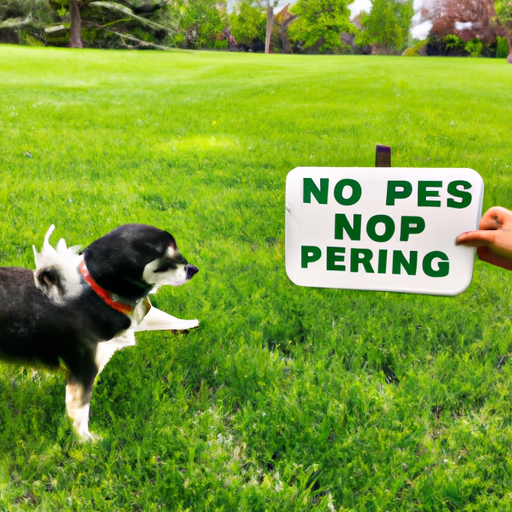As caregivers to our furry friends, one of the more common challenges we face is improper urination. Your beloved pup might be marking territory, experiencing medical issues, or simply not fully house-trained yet. Whatever the reason, it’s a problem that can be frustrating and messy. In this article, we’ll discuss how to stop dogs from peeing everywhere in your home, yard, and other inappropriate locations.
Table of Contents
- Understanding Why Dogs Pee
- Training Your Dog Not to Pee Indoors
- Addressing Medical Issues
- Creating a Consistent Routine
- Implementing Deterrents
- Frequently Asked Questions
Key Takeaways
- Dogs pee due to a variety of factors including marking territory, medical issues, and lack of training.
- Training your dog not to pee indoors involves consistency, positive reinforcement, and patience.
- If your dog is peeing excessively, a visit to the vet may be necessary to rule out medical issues.
- A consistent routine for feeding, exercise, and bathroom breaks can help regulate your dog’s bladder.
- Using deterrents like sprays or doggy diapers can help control the situation while training is ongoing.
Understanding Why Dogs Pee
First and foremost, it’s important to understand why dogs pee. There are several reasons why a dog might be peeing inappropriately. One of the most common reasons is marking territory. Dogs often use their urine to mark their territory and assert dominance. This is especially common in male dogs, though female dogs can engage in this behavior as well.
Other reasons might be related to behavioral issues or medical problems. For instance, anxiety, fear, or excitement can trigger inappropriate urination. Similarly, urinary tract infections, diabetes, or kidney disease can cause excessive urination. If your dog suddenly starts peeing more frequently or in unusual places, it’s always a good idea to consult with a vet to rule out any potential medical issues.
For more information on understanding canine behavior, check out this article.
Training Your Dog Not to Pee Indoors
When it comes to training your dog not to pee indoors, consistency, patience, and positive reinforcement are key. Start by establishing a designated bathroom area outside. Each time your dog needs to relieve itself, guide it to this spot. When your dog successfully pees in the correct location, reward it with a treat, praise, or a favorite game.
If your dog has an accident indoors, it’s important not to punish or scold it. Instead, clean up the mess thoroughly to remove the smell so your dog is less likely to use that spot again. Then, reinforce the correct behavior by taking your dog outside to the designated bathroom area.
For more tips on training your dog, check out these articles on house-training and positive reinforcement.
Addressing Medical Issues
If your dog is peeing excessively or showing signs of discomfort while urinating, it may be time to visit the vet. Medical issues such as urinary tract infections, bladder stones, diabetes or kidney disease can cause inappropriate urination. Your vet can run tests to diagnose these conditions and provide appropriate treatment.
For more information on dog health issues, you can refer to this article.
Creating a Consistent Routine
Dogs thrive on routines. By feeding, exercising, and letting your dog out to pee at the same times each day, you can help regulate its bladder. Most dogs need to pee immediately after waking up, after eating, and after vigorous play. By anticipating these needs and providing regular bathroom breaks, you can prevent accidents.
Implementing Deterrents
In addition to training, there are also deterrents you can use to discourage your dog from peeing in certain areas. These include sprays that mask the smell of previous accidents, doggy diapers for incontinent dogs, and pee pads for dogs who can’t hold it for long periods.
Frequently Asked Questions
1. Why is my dog suddenly peeing in the house?
Sudden changes in urination could be due to medical issues, anxiety, or changes in the environment. Consult with a vet to rule out any health problems.
2. How long does it take to house-train a dog?
The time it takes to house-train a dog varies depending on the dog’s age, temperament, and previous experiences. But with consistency and patience, most dogs can be house-trained in a few weeks to a few months.
3. Can older dogs be house-trained?
Yes! While older dogs may take a bit longer to train compared to puppies, they can still learn to pee in the correct places with enough patience and consistency.
Remember, managing your dog’s urination habits is a process that requires understanding, patience, and consistency. With the right approach, you can solve this issue and have more quality time with your furry friend.



